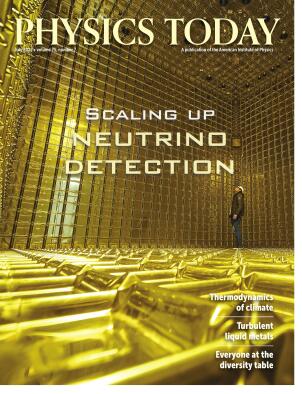Contributions to computed tomography
DOI: 10.1063/PT.3.5030
As I started reading the article on computed tomography (CT) by John Boone and Cynthia McCollough (Physics Today, September 2021, page 34
In his 1964 paper, Cormack experimentally demonstrated the CT principle. 1 He built a hand-operated scanner to measure the attenuation of a cobalt-60 beam as it passed through an object along paths at various angles, referred to now as translate–rotate geometry and shown in figure 1a of Boone and McCollough’s article. Using data collected over a two-day period, he reconstructed the scanned object’s attenuation-coefficient profiles along several lines through the object and showed that, aside from some slight ringing artifacts, the reconstructed values matched the known values. Those profile plots demonstrated that he had achieved his goal of determining the attenuation values inside an object from its x-ray attenuation measurements.
Cormack, in his 1963 paper, presciently suggested the application of his work to two other modalities: positron emission tomography and single-photon emission computerized tomography, commonly referred to as PET and SPECT, respectively, which are frequently performed in the clinic today. 2 Prompted by an earlier suggestion by Robert Wilson that protons could be useful in medicine, 3 Cormack was especially interested in the promise of proton CT, which is currently being investigated for proton-therapy treatment planning. 4
References
1. A. M. Cormack, J. Appl. Phys. 35, 2908 (1964). https://doi.org/10.1063/1.1713127
2. A. M. Cormack, J. Appl. Phys. 34, 2722 (1963). https://doi.org/10.1063/1.1729798
3. R. R. Wilson, Radiology 47, 487 (1946). https://doi.org/10.1148/47.5.487
4. K. Hanson, U. Schneider, Z. Med. Phys. 32, 2 (2022). https://doi.org/10.1016/j.zemedi.2021.11.005
More about the Authors
Kenneth M. Hanson. (kmh@hansonhub.com) Los Alamos, New Mexico.
